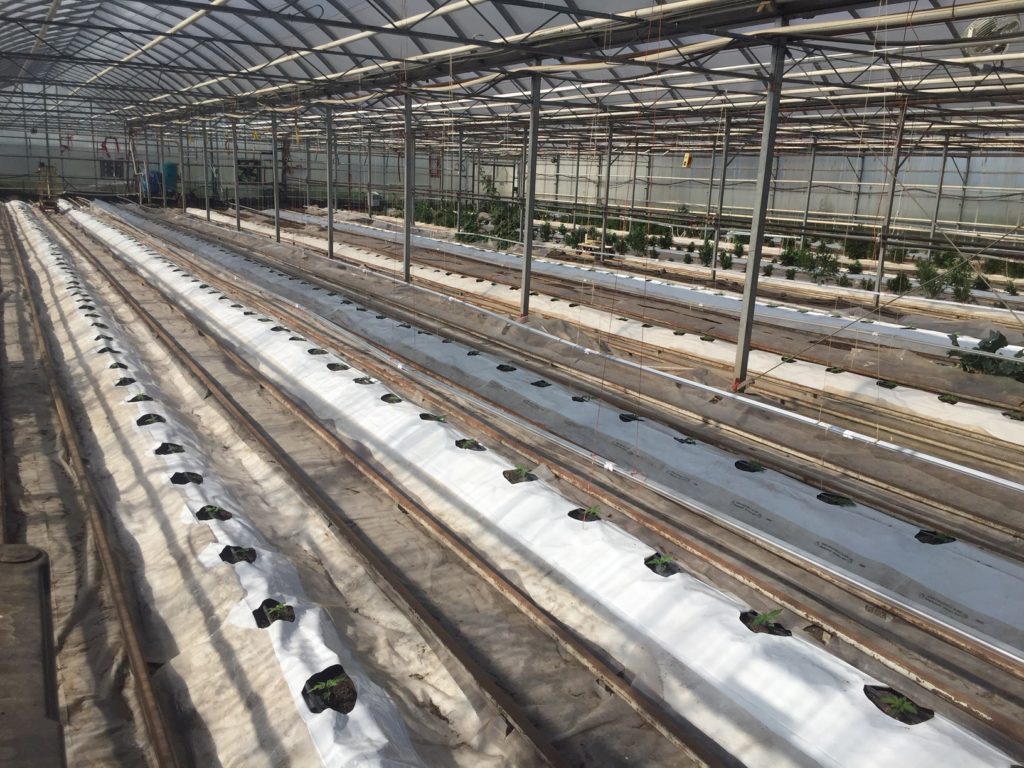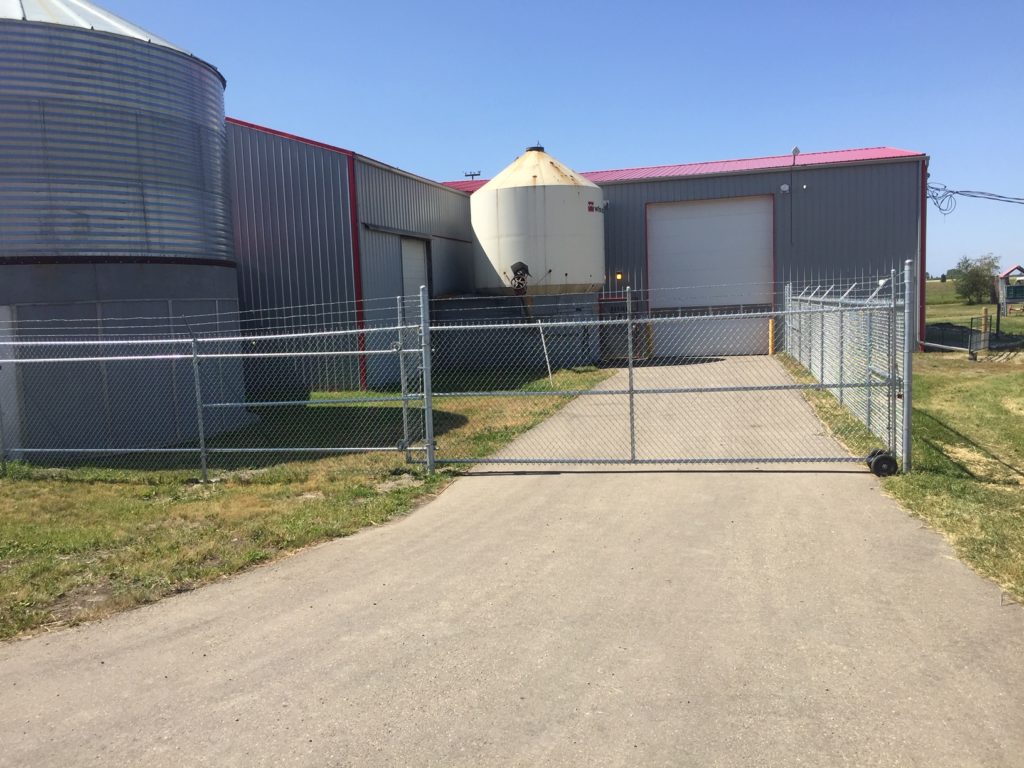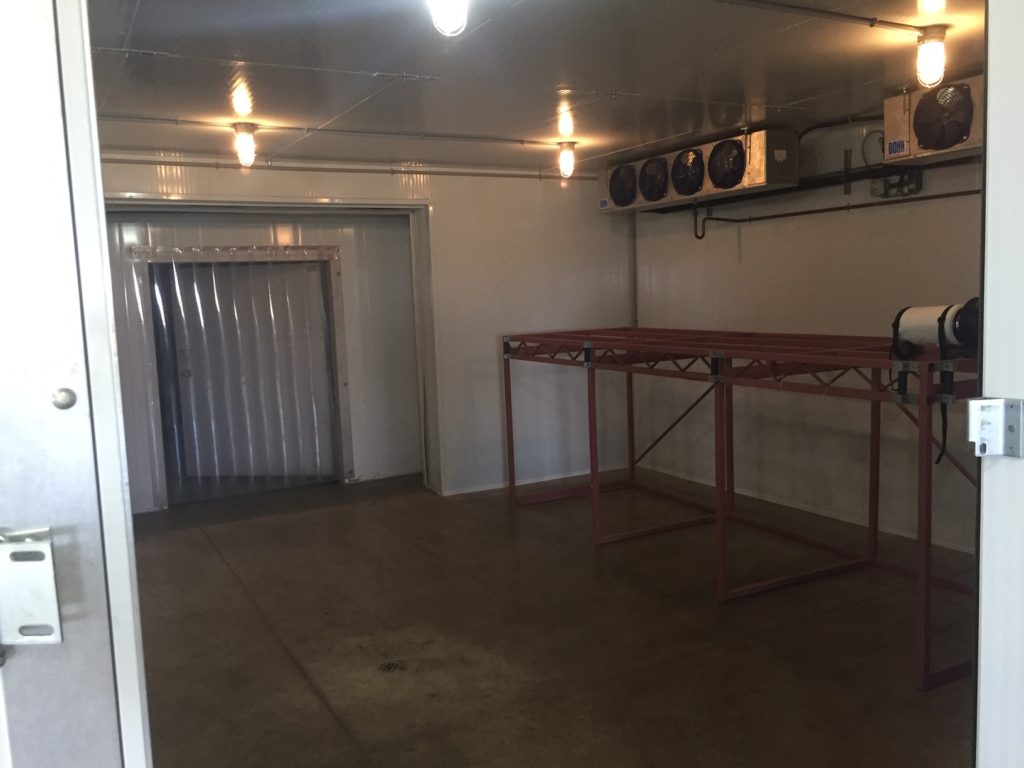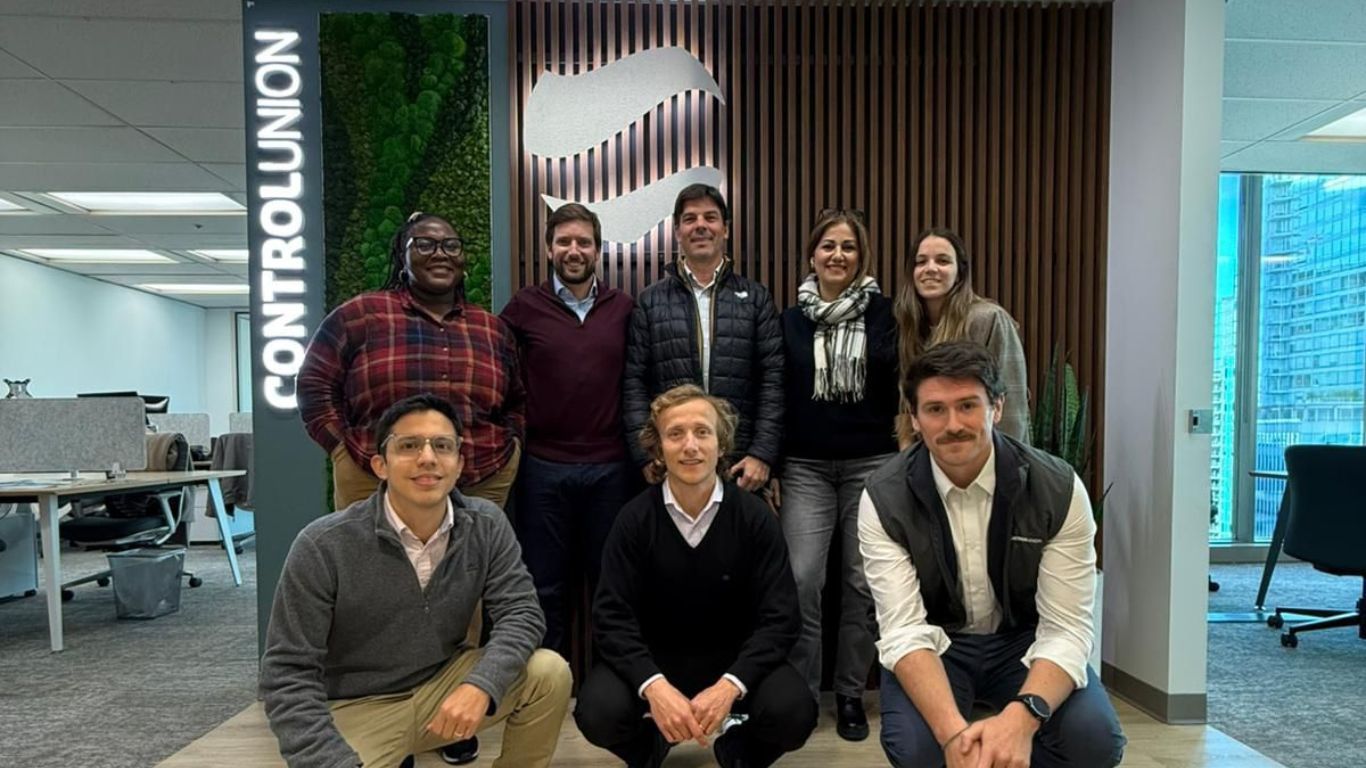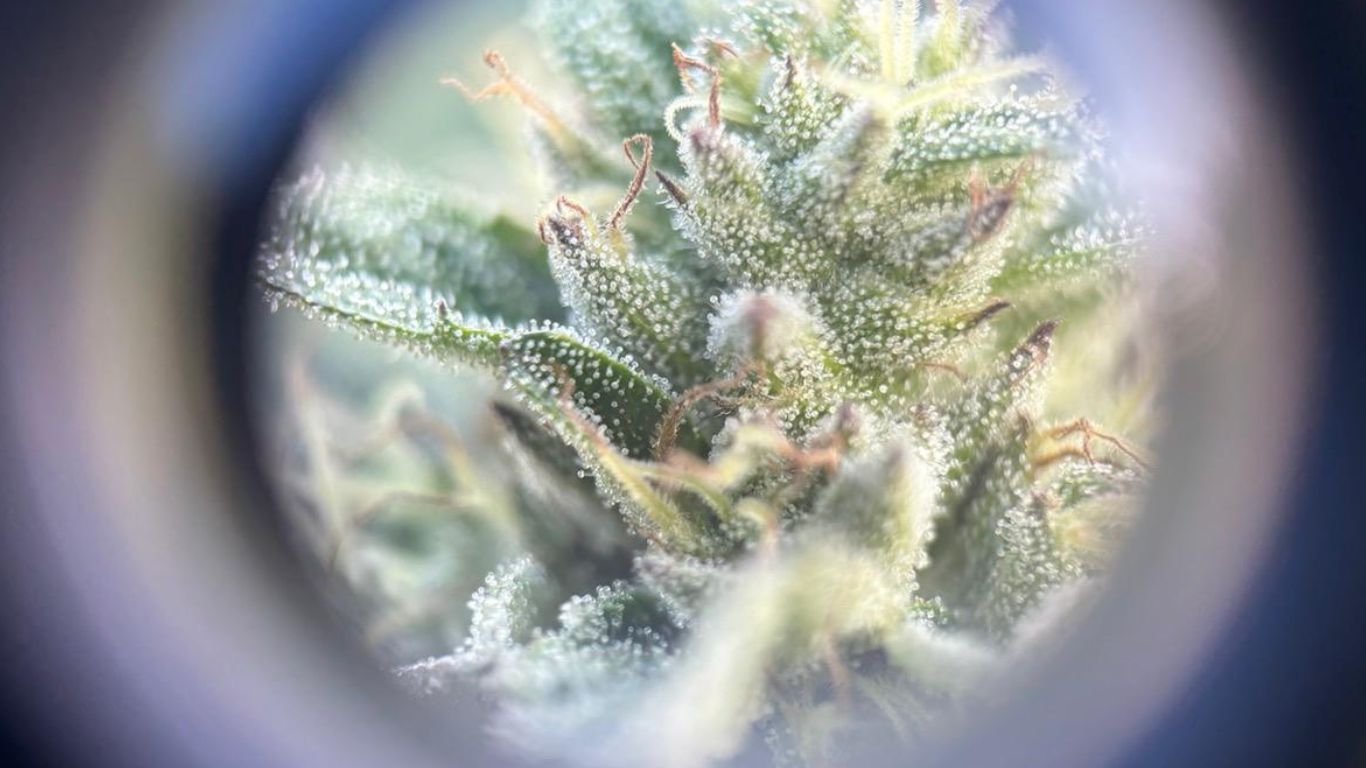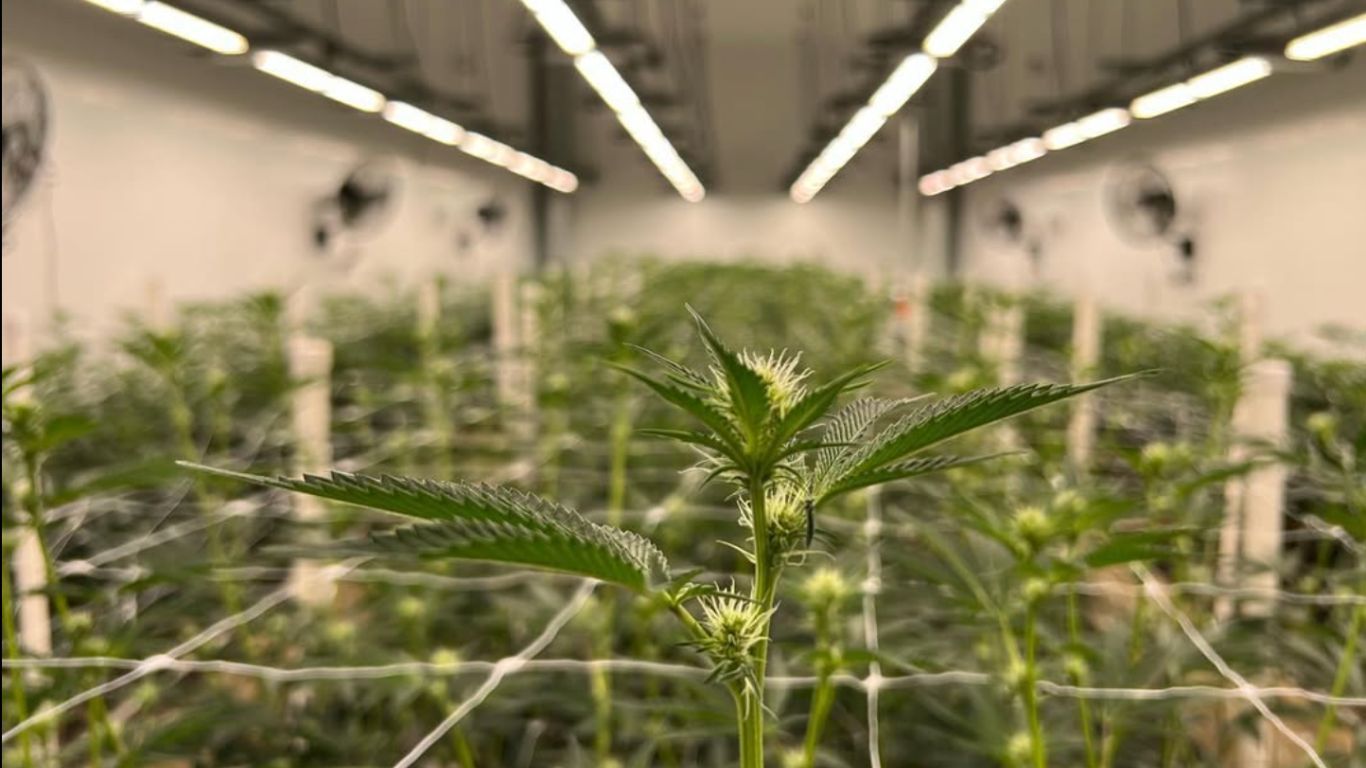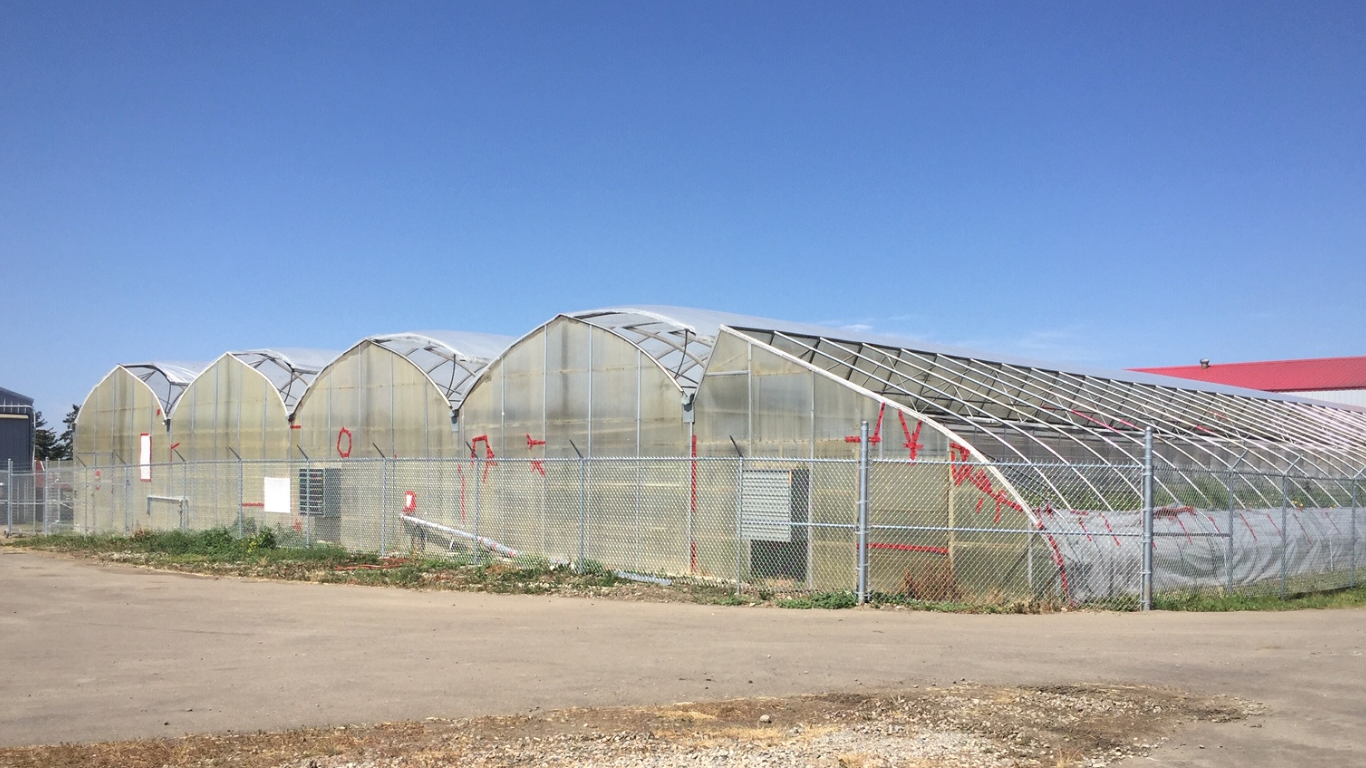
| COMPANY: | Budding Gardens Inc. |
| LICENCE TYPE: | Micro-Cultivator |
| APPROACH: | Greenhouse, in soil |
| TIMELINE: | ~8 months |
| COST: | Approximately $100,000 |
| FACILITY: | 12,000 ft Greenhouse |
Budding Gardens was started by Jim Vanden Berg in early 2019. He’s currently growing out his first crop of Bruce Banner inside his 12,000 ft greenhouse located just outside Calgary, Alberta.
Licensed as a micro cultivator, Vanden Berg is only using 200m2, or about 2,100ft2 of his large commercial greenhouse, but says he does have plans to utilize more of the facility in the future.
The idea of a greenhouse that is open-vented and growing in soil, they had a hard time wrapping their head around that.
With a background in finance and actuarial science, he says he’s also been a proponent of cannabis and had been looking at a commercial cannabis license as far back as 2015. It wasn’t until new regulations came out in 2018 that allowed for smaller scale production under a micro cultivation license that he saw an opportunity to get into the new industry.
“I started looking at this around 2015, but it was hard for a small guy to get in back then,” he says. “With the costs and the amount of regulations, there were significant barriers to entry, especially for a small business. But in late 2018, seeing what the new regulations looked like, it finally seemed like something that was doable.”
The first step, he says, was looking at land-use bylaws and property in different places in Canada. Because he wanted to grow outdoors or in a greenhouse, initially, he was looking at southern British Columbia or southern Alberta, but he found that there were considerable restrictions on agricultural land in BC. Then, he says he found Rocky View County, outside Calgary that had updated their land-use bylaws that allowed cannabis cultivation on any agricultural land. He says he found the right kind of greenhouse that would allow him to grow in the way he envisioned, and he started moving forward.
It doesn’t have a foundation, we are growing in the earth, and there’s 600 feet of open, vented ceilings.
Leasing the greenhouse in early 2019, he says he started working on retrofitting it to adhere to the regulations, and applied to Health Canada in August of the same year. Tamara Follette from Sunleaf Micro-cultivation was an important contact early on and was very helpful in supporting other micro-cultivators. He estimates he spent around $100,000 in total to get from leasing and retrofitting his facility, to applying and getting licensed. Currently, Budding Gardens is only he and his wife, although they have plans to bring in one or two others to help them as they begin growing out and harvesting their first crop.
The licensing process itself was not easy, largely because of the unique nature of his greenhouse. Because it has no poured foundation, growing directly in the soil, and allows venting into the open air, in many ways he felt he was growing outdoors. But Health Canada was unsure if it was considered indoors or outdoors, which he says stretched out their application time longer than he had planned.
“Working with Health Canada,” says Vanden Berg, “I found it was a real challenge, mostly because of our greenhouse. I found it really surprising that when it comes to growing in a commercial greenhouse, that seemed like it was a novel idea to them. They look at the regulations as saying either you’re growing in a building, or you’re growing outdoors and did not consider a greenhouse as an option.
“The idea of a greenhouse that is open-vented and growing in soil, they had a hard time wrapping their head around that. We were trying our best to tell them this is an outdoor facility. It doesn’t have a foundation, we are growing in the earth, and there’s 600 feet of open, vented ceilings.”
I wanted to get the license first, start growing a good crop, then we’ll look at future opportunities.
One silver lining, though, is he says the extended back and forth with his file manager over the issue has pushed Health Canada to look at their policy of how they define indoor and outdoor facilities, especially in relation to greenhouses, which often occupy a space somewhat in between those two categories.
He also says one of the unique challenges for him was having such a large facility with multiple entrances and extra space that had to be accounted for, even if there were no licensed activities occurring. This is one part of the process he says he might have done differently, had he known, but now that they are licensed, he feels he can always make use of all the extra greenhouse space for crop rotation and beneficial vegetation. A greenhouse provides the best light that can be supplemented as necessary and still allow for the use of CO2 and environmental controls.
I think micros provides an avenue for people to do this on a reasonable scale. It’s not huge, but it’s significant enough to certainly build a business on, and it’s certainly doable.
“I have room to expand and I’m certainly keeping it in mind as a consideration,” says Vanden Berg. “But one step at a time. I wanted to get the license first, start growing a good crop, then we’ll look at future opportunities. I have the facility and space to consider that.”
Staying small and simple will help other new applicants avoid some of the challenges that he ran into, he says.
“I think micros provides an avenue for people to do this on a reasonable scale. It’s not huge, but it’s significant enough to certainly build a business on, and it’s certainly doable. I think there’s a lot of ACMPR growers out there who would like to move into this space and are concerned about the regulatory hurdle, and there certainly are some, but they are hurdles that can be jumped and moved past. It’s a doable process. It will be easier if you have a clean, very simple facility.”

